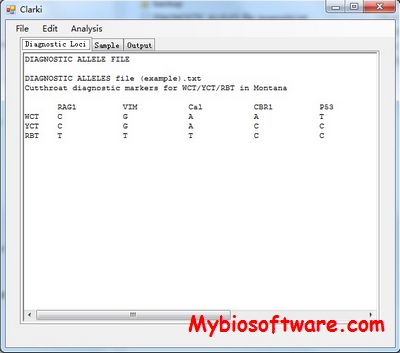E-Predict 1.0
:: DESCRIPTION
E-Predict compares observed hybridization patterns with theoretical energy profiles representing different species. We demonstrate the application of the algorithm to viral detection in a set of clinical samples and discuss its relevance to other metagenomic applications.
::DEVELOPER
:: SCREENSHOTS
N/A
:: REQUIREMENTS
- Linux
- Apache
- Perl
:: DOWNLOAD
:: MORE INFORMATION
Citation
Urisman A, Fischer KF, Chiu CY, Kistler AL, Beck S, Wang D, DeRisi JL.
E-Predict: A Computational Strategy for Species Identification Based on Observed DNA Microarray Hybridization Patterns.
Genome Biology 2005, 6:R78
